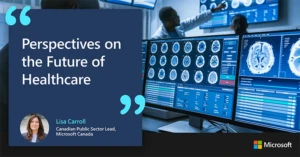
Trends Driving Change in Mixed Reality for Healthcare
Mixed reality continues to be a disruptive force in healthcare with examples ranging from the abolishment of cadavers in medical student training to Post-Traumatic Stress Disorder (PTSD) immersion therapy for patients and pre-operative visualization of brain tumors overlaid with diagnostics.
Looking forward, what will be some of the most important areas of growth, evolution and innovation for Mixed Reality in healthcare? Where will be the areas to invest energy and resources to take advantage of these technology growth areas? Here are 4 areas that I think will lead shifts in the way we create change with mixed realities.
Trend #1: Augmented Reality + Virtual Reality
Battles will fade as people embrace the entire spectrum of realities. These technologies do not need to be mutually exclusive because they can be complementary since one size fits all is rarely the case. This also means scenarios will bridge across form factors, igniting experiences and collaboration on platforms vs hardware alone. Some things we may expect to see:
- Practitioners reviewing scans in-person using AR while connecting a remote colleague to collaborate from their office using VR
- Bringing hospitalized patients with limited mobility together with their loved ones who may be remotely interacting in their physical space at home
Trend #2: Mixed Reality + Artificial Intelligence
Mixed Reality and Artificial Intelligence are driving fundamental shifts that are redefining the future of computing. Together, Mixed Reality and Artificial Intelligence will continue to enable experiences where our interactions with people, places and things will evolve. Here are some ways I think we will see this evolve:
Vision – We may see assisted identification, understanding and labelling of the things we are working on (in plain view) – organs, tools, people – assisting us at navigating our work
Speech – We may see this enable those with hearing impairment to more easily engage with the world around them, converting spoken audio to text in real time
Language – We may use natural language processing to enable real-time audio translations between patients and caregivers who speak in different native tongue
Trend #3: Immersive Communication
Immersive communication will let us have real-time and photo realistic holograms of the people we are speaking with. Immersive communication will enhance our ability to achieve digital presence. It will bring distant people together in more meaningful ways than ever before – connecting healthcare practitioners to remote patients or families to distant loved ones. Communication becomes more natural when we are speaking to a photo realistic hologram of someone in real time. Take a look at some work Microsoft Research has been doing in this area:
Trend #4: Mixed Reality + Internet of Things (IoT)
Combining IoT data with the visualization capabilities of mixed reality will continue to evolve the way we interpret, track and interact with data from near and far. This will help enable digital twins of a patient with real time updates on vitals or interactive hospital maps with traffic flow, patient loads and real time ER wait times!
Things are moving fast in the world of mixed reality and because of that, these trends are not future predictions, but rather areas of innovation happening around the world today! I am excited by what the year ahead holds and will continue to share some of the most amazing examples that we are seeing from Canada and around the world! How do you see these trends transforming healthcare?
For more information on Augmented Reality / Virtual Reality watch our on-demand webinar, click here.




